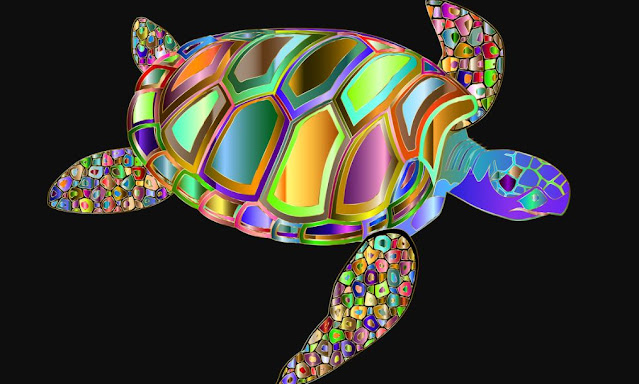What covers the turtle's body?
the turtle
The turtle is one of the types of cold-blooded reptiles, including land turtles and water turtles, and they share the same characteristics that are characterized by reptiles, such as:
Breathing by the lungs, the presence of a heart consisting of two atria and one ventricle, and the temperature of the environment controls the temperature of their bodies, and they lay their eggs in a semi-dry place without incubating them, as their structure is formed from bone tissue.
Turtle body
The turtle’s body is covered by the carapace, which is made of solid, compact horn plates that cover the turtle’s body to protect it.
Types of turtles
There are eight species of turtle in the world: Kemp's Ridley, Olive Ridley, Hawks Bell, Luger Head, Green Turtle (Green Turtle), Black Turtle (Black Turtle), and Flatback (Flat Back).
Tortoise feed
The large turtle that has a huge head is classified as carnivorous, and it feeds on the vertebrates at the bottom, such as crabs, and mollusks, as it feeds on small fish and young hatched turtles, and it is worth noting that the green turtle feeds in the same way, as for small turtles That live on the surface of the earth and feed on animal and plant organisms.
About turtle
- Sharp vision and the ability to distinguish colors, and some types of turtle can see underwater for short distances.
- A good sense of smell, as she has sensory nerves that enable her to feel when touching her skin or her shell.
- Slow walking due to the shortness of her feet, as her walking speed reaches 0.5 km per hour, and the swimming speed reaches 30 km per hour.
- Not having teeth, but rather they have a strong semi-beak through which they can grind food.
- It has two lungs that cannot be seen; Because they are located inside the shell.
- The shell consists of sixty bones, which serve as its backbone.
- Living for many years can reach two centuries.
- Wild turtles can survive in a freezing-temperature environment for several days.
- The tail in a male is longer and thicker than that of a female.
- Being able to mate at the age of 5-20 years.
- Female turtles are able to lay one to two-hundred eggs in each position, depending on their species.
- The period of incubation of eggs ranges from two to three months, and in other types, it reaches more than a year.
- Determining the temperature of a young turtle, if the temperature is less than 28 degrees Celsius, the hatching is complete of males, and if the temperature is between 28-30 degrees Celsius, the hatching is mixed (the lower layer is female and the upper layer is male), and if the temperature is more than 30 Celsius hatch is complete of females.


